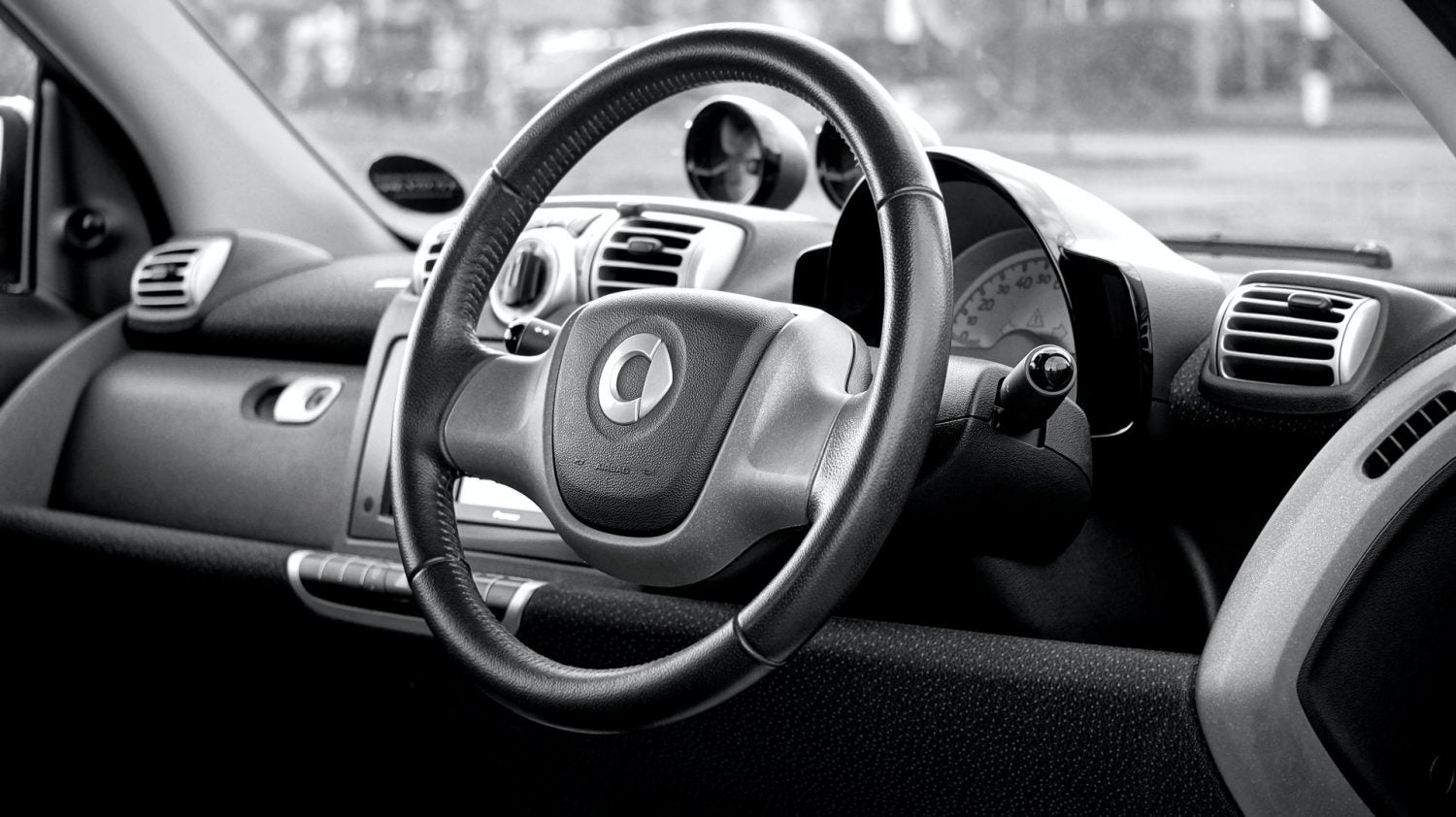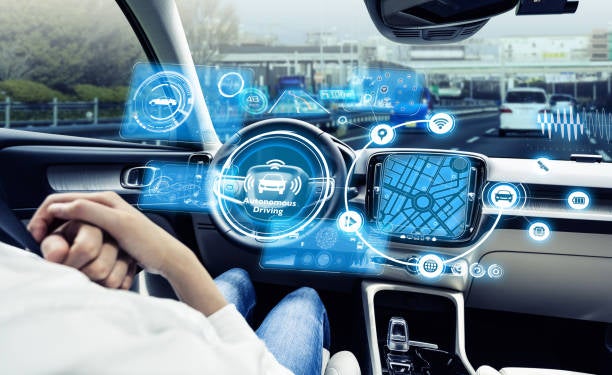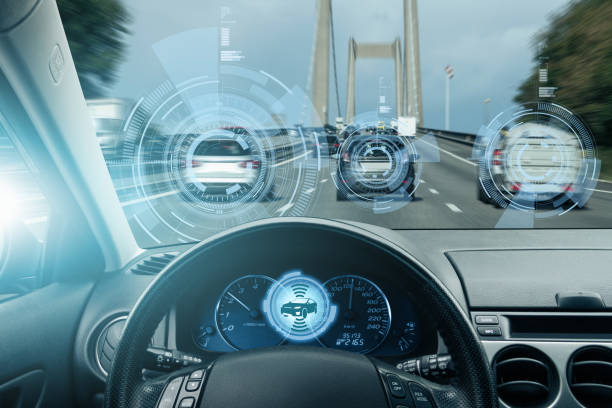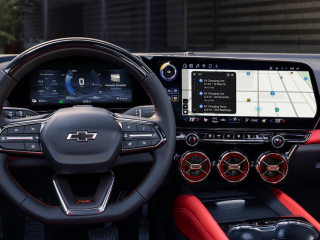There are various locations where Artificial Intelligence (AI) may now be found, including your smartphone, an intelligent home system, and a smart car. Many towns are embracing artificial intelligence to improve road safety. The technology that is at the heart of this is revolutionary. Automakers are among the industries reaping the benefits of artificial intelligence to the fullest extent possible. The automobiles we today drive are far safer and more fuel-efficient than they were previously.
Artificial intelligence (AI) is a method of replicating and even surpassing the decision-making abilities of humans by using data and machine learning algorithms. As a result, such solutions offer value to products while also speeding up operations, increasing efficiency, and revealing data that has life-changing implications. It substantially impacts many production and manufacturing sectors, including aviation, manufacturing, technology, and other related industries.
The automobile industry is rapidly emerging as a significant source of artificial intelligence and machine learning. Over the next decade, artificial intelligence (AI) will play an increasingly important role in the automobile sector, and it cannot be understated. Automotive players must embrace the potential of artificial intelligence to combat the long-term existential risks of sustainability, overcapacity, and the prospect of declining volume as a result of the issue of shared mobility. There is the most significant opportunity to improve the wealth of data that car suppliers and manufacturers acquire but do not currently use effectively. The volume of data generated by autonomous, software-defined, and networked vehicle functions will only increase in the future as the quantity and scope of these capabilities increase. Big data analytics and machine learning (ML) are meant to swiftly assimilate massive amounts of data, understand what it means, and apply the insights from this analysis. Furthermore, due to the pandemic-induced cash conservation and cost-cutting of moonshot programs, some of the dangers (such as autonomy and shared mobility) have been temporarily alleviated. As a result, it is now, more than ever, the right time to adopt artificial intelligence in the automotive value chain.
Initial Investment Capital
Even though corporate expenditure on artificial intelligence systems is expected to surpass $50 billion this year, the great majority of corporations may not see a significant return on their record investments. According to a new analysis from the MIT Sloan Management Review and the Boston Consulting Group, only 10 percent of firm managers who responded to a poll on their artificial intelligence spending indicated significant financial gains from their investment thus far, according to the survey. Predictive Maintenance (sometimes known as “predictive maintenance”) is preventative Maintenance that anticipates problems before they occur. The paradigm of Maintenance is shifting from a preventive to a predictive one due to artificial intelligence. When it comes to scheduling car maintenance, rather than relying on event-driven or time-driven approaches, artificial intelligence can assist you by offering actionable insights for your vehicle. In addition to historical data, artificial intelligence uses sensors and contextual data such as geography or weather information. Artificial intelligence (AI) can provide alerts for real-time condition-based maintenance requirements for your vehicle through data analysis and machine learning.
Evaluation of the Driver
According to the driver’s past behavior, artificial intelligence can foresee the problems due to his forgetfulness. By analyzing the driver’s driving habits, artificial intelligence can predict the driver’s personal or professional life danger. Additionally, artificial intelligence (AI) can monitor the driver’s vital signs to inform him and take control of the car in an emergency by utilizing tiredness monitoring devices. A fake intelligence-driven camera can detect tiredness in the driver and send an alarm.
Communication Improvements
Vehicle-to-vehicle (V2V) and vehicle-to-infrastructure (V2I) communication are now available because of artificial intelligence. Because of this technology, your car can connect with other vehicles and with road signs, traffic signals, and other infrastructure. By allowing automobiles to communicate with one another, you will smoothly benefit from advanced features such as lane monitoring, lane switching, cruise control, and other similar functions. Furthermore, V2I communication allows you to reroute your vehicle to avoid clogged highways and additional traffic congestion. Briefly stated, improved communication lowers the likelihood of accidents occurring and expedites the journey to your goal with less fuss.
Insurance Claim Settlement that is Simple
The insurance industry deals with managing data from various sources, and artificial intelligence holds enormous promise for development. For example, an in-car camera can film accidents that may be useful in the event of a legal dispute or an insurance settlement. Artificial intelligence can digest data swiftly in an identical vein, allowing the claim-settlement process to be completed more quickly. Using the data-analyzing capabilities of artificial intelligence, it is possible to create profiles of drivers and identify false claims.
Automobile Manufacturing
Apart from improving the driving experience, artificial intelligence can revolutionize the way automobiles are built. Machines have aided in the assembly lines of automobile manufacturers for more than five decades. However, we can design clever robots that work alongside their human counterparts rather than working for them by employing AI. For example, AI aids in building autonomous delivery vehicles to transfer components in a facility. Similarly, intelligent, wearable robots work jointly with workers to deliver up to 20 percent gain in production efficiency.
Manual Driving
The theory of driving a manual car may appear hard to individuals who are considering learning, but in practice, it is pretty simple to understand and master. If you can do two tasks at the same time, such as pressing the accelerator with your foot and rotating the steering wheel, you most likely have the motor abilities necessary to operate a manual transmission. Only a fraction of the roughly three-quarters of a million driving tests done every (average) year in the United Kingdom is automatic-only tests (less than 5,000). Even though it is perceived as more accessible, fewer trainees pass the automatic test than the complete manual test. This is most likely because learners drawn to the automated test may be more nervous and not reflect how easy or difficult it is to drive an automatic car. Learners debating whether to take their driving test in a manual or automatic vehicle should consider that insurance rates for automated vehicles are frequently higher than those for manual cars because they are often more expensive and more challenging to repair.
Assisted Driving
Thanks to Ericsson’s automotive capabilities, assisted driving and advanced driver assistance systems (ADAS) enable vehicles to look around bends, avoid hazards, collaborate, and interact with their environment more intelligently than ever before. Powered by Ericsson’s Connected Vehicle Cloud, these capabilities are made available through an automotive-grade, guaranteed 24-hour-per-day service package. As a result of assisted driving, automobile makers can achieve unparalleled levels of safety, allowing drivers to navigate both urban and rural jungles with more ease. The reduction in the number of accidents is one of the benefits of aided driving. Because the technology controls the vehicle, autonomous vehicles eliminate the possibility of human error. On the other hand, they are believed to have high-tech cars and equipment, which are pricey.
Autonomous AI
LEVEL 1. In Level 1 automation, the car performs some minor steering and acceleration tasks without human intervention. Still, everything else is entirely under the control of the driver.
LEVEL 2. For example, advanced cruise control or the initial autopilot system on some Tesla vehicles are. examples of Level 2 automation. The automobile can automatically perform safety actions, but the driver must remain vigilant while behind the wheel.
LEVEL 3. Under specific traffic or environmental conditions, a human driver is still required at Level 3 automation. Still, humans can also delegate some “safety-critical responsibilities” to the vehicle under certain situations. As humans transmit the critical jobs of driving to or from the car itself, there is the possibility of some hazard, which is why certain car firms (including Ford) are interested in moving directly to level 4.
LEVEL 4. Level 4 automation refers to a vehicle that can drive itself almost entirely without the need for human intervention, albeit it may be programmed to avoid driving in unmapped areas or during severe weather. This is a vehicle in which you could sleep.
LEVEL 5. Level 5 automation refers to complete automation under all circumstances.
Conclusion
Final words: additional collaborations, partnerships, and acquisitions are predicted to be observed across the automotive sector, as OEMs strive to remain competitive by partnering with technology providers and other entities throughout the value chain of their products and services. This will be mainly done to prevent new players/entities from gaining an unfair advantage. Artificial intelligence is transforming the mobility sector by introducing driverless vehicles, improved entertainment systems, and driver risk assessment. To maximize their revenue share in the future automobile market, traditional OEMs must devise strategies to increase their market share. Today, technology companies are at the vanguard, leveraging their artificial intelligence (AI) skills from mature industries such as information and communications technology (ICT) to seize the autonomous car industry.





















